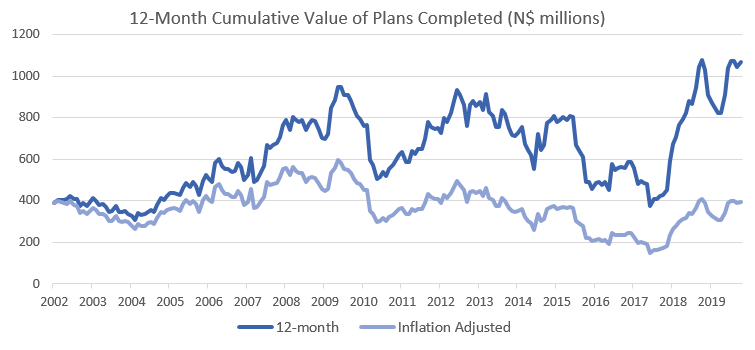Twitter Timeline
[custom-twitter-feeds]
Categories
- Calculators (1)
- Company Research (295)
- Capricorn Investment Group (51)
- FirstRand Namibia (53)
- Letshego Holdings Namibia (25)
- Mobile Telecommunications Limited (7)
- NamAsset (3)
- Namibia Breweries (45)
- Oryx Properties (58)
- Paratus Namibia Holdings (6)
- SBN Holdings Limited (17)
- Economic Research (651)
- BoN MPC Meetings (12)
- Budget (19)
- Building Plans (140)
- Inflation (140)
- Other (28)
- Outlook (17)
- Presentations (2)
- Private Sector Credit Extension (138)
- Tourism (7)
- Trade Statistics (4)
- Vehicle Sales (142)
- Media (25)
- Print Media (15)
- TV Interviews (9)
- Regular Research (1,761)
- Business Climate Monitor (75)
- IJG Daily (1,564)
- IJG Elephant Book (12)
- IJG Monthly (108)
- Team Commentary (250)
- Danie van Wyk (61)
- Dylan van Wyk (27)
- Eric van Zyl (16)
- Hugo van den Heever (1)
- Leon Maloney (11)
- Top of Mind (4)
- Zane Feris (12)
- Uncategorized (5)
- Valuation (4,337)
- Asset Performance (113)
- IJG All Bond Index (1,998)
- IJG Daily Valuation (1,750)
- Weekly Yield Curve (475)
Meta
Author Archives: IJGResearch
Building Plans – November 2019
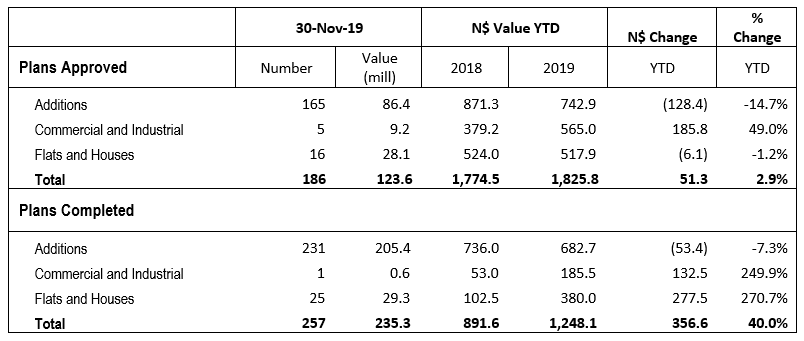
A total of 186 building plans were approved by the City of Windhoek in November. This is a 13.1% contraction in the number of plans approved on a monthly basis when compared to the 214 building plans approved in October. The approvals were valued at N$123.6 million, a decrease of N$11.0 million or 8.2% compared to the prior month. The number of completions for the month of November stood at 257, valued at N$235.3 million. The year-to-date value of approved building plans currently stands at N$1.83 billion, 2.9% higher than at the end of November 2018. On a twelve-month cumulative basis 2,032 building plans worth approximately N$1.89 billion have been approved, a decrease of 5.2% y/y in number but an increase of 0.8% in value terms over the prior 12-month period.
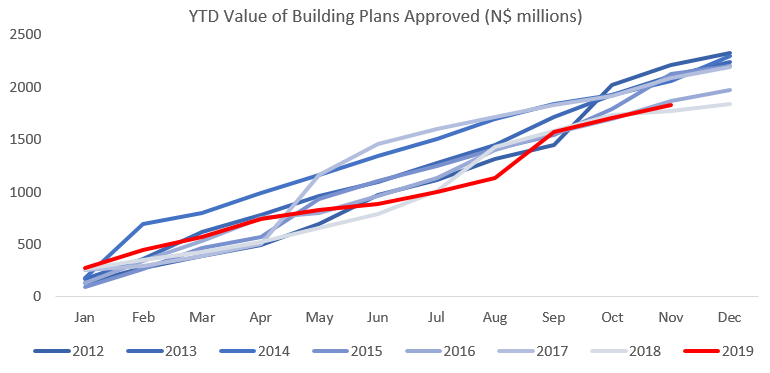
The largest portion of building plan approvals was once again made up of additions to properties. 165 additions to properties were approved in November, a 120.0% increase year-on-year but 7.8% decrease over the number of additions approved in October. Year-to-date 1,565 additions to properties have been approved with a cumulative value of N$742.9 million, a decline of 14.7% y/y in terms of value compared to the same period in 2018. Completed additions amounted to 231, valued at N$205.4 million, an increase of 7.4%% m/m in number and 149.6% m/m in value. Year-to-date 1,259 additions have been completed to a value of N$682.7 million, a drop of 43.1% y/y in number and 7.3% y/y in value.
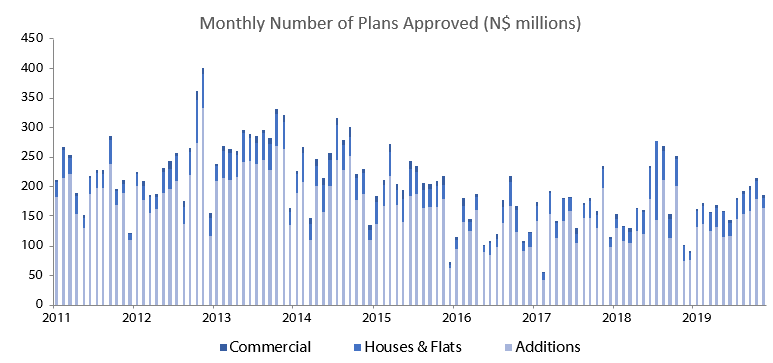
New residential units were the second largest contributor to the number of building plans approved with 16 approvals registered in November, compared to 31 in October. In value terms, N$28.1 million worth of residential units were approved in November, a decreases of 41.3% m/m but an increase of 42.2% y/y. 332 New residential units valued at N$517.9m were approved in the first eleven months of 2019, 29.2% y/y less in number and 1.2% y/y less in value than during the corresponding period in 2018. 25 Residential units valued at N$29.3 million were completed in November bringing the year-to-date number to 279, up 350% y/y, and value to N$380 million, up 270.7% y/y.
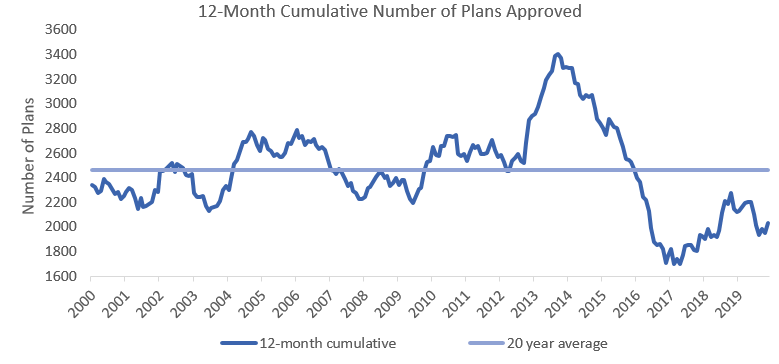
Commercial and industrial building plans approved in November amounted to 5 units, worth N$9.2 million. The number of approvals for commercial and industrial properties has been languishing in single digit territory since September 2016 and has an average approval rate of less than 4 approvals per month over the last 12 months. On a year-to-date basis, the number of commercial and industrial approvals increased by 10.0% y/y in November to 44 units, worth approximately N$565.0 million, an increase of 49.0% in value terms over the period ending November 2018. One commercial and industrial building plan was recorded as completed in November, valued at N$600,000.
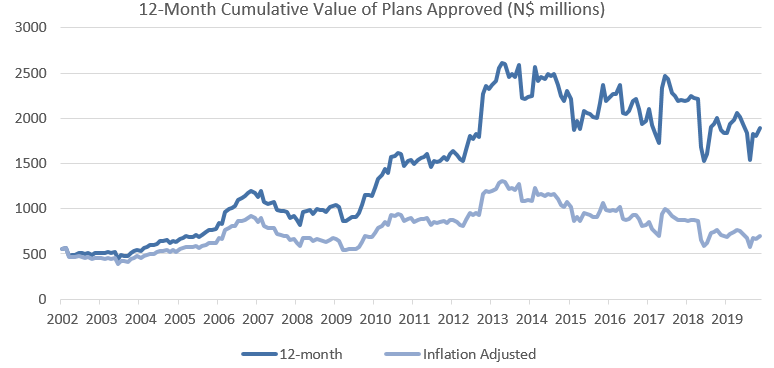
During the last 12 months, 2,032 building plans have been approved, decreasing by 5.2% y/y. These approvals were worth a combined N$1.89 billion, an increase in value of 0.8% y/y. The last 3 months have seen a steady uptick in the 12-month cumulative value of plans approved in the capital although this measure is still trending downward from a longer term perspective. The value of plans completed has however recovered more significantly as can be seen in the below figure.
